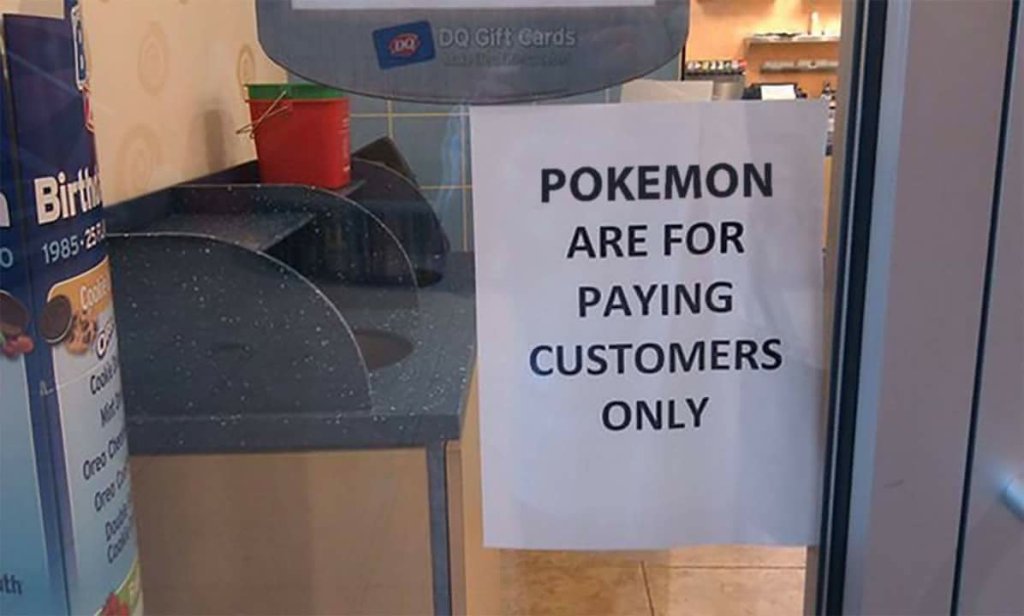If you were looking for a rare Pokémon and encountered the sign above, what would you do? Because I’d pay up to get whatever pocket monster was lurking within.
Ingress and Nintendo don’t seem to have made paid in-game locations a part of Pokémon Go’s business model right now (for that, look to in-app purchases), but the ability the app has to drive real-world foot traffic to locations is undeniable. The example above was posted to NeoGAF forums, but others abound, and some businesses are going the other way and using their Poké-presence to encourage folks to come inside.
Currently, PokéStops and Pokémon Gyms (key real-world locations and landmarks that Pokémon Go players visit to acquire collectibles and do battle) are pulled from the location database of Niantic’s original location-based AR game, Ingress. Those locations are generated through user submissions, which are open to anyone in the user community, and which are vetted by Niantic before being added to the public database.
Ingress used sponsored in-game locations to drive revenue, too. Bank of Tokyo-Mitsubishi UFJ teamed up with Niantic for a big branding campaign, for instance, which included uses its ATMs as “portals” within Ingress, as well as the introduction of a branded in-game object. Other sponsors for Ingress locations include Zipcar, AXA and Circle K, to name a few.
In an interview with gamesindustry.biz, Niantic Product Manager Brandon Badger explained how the company envisioned a branded location schema aimed at driving revenue from marketing in Ingress:
“I think that, we hope to end up with a model where, potentially there could be a cost-per-visit type model where large brands and small brands, as well, could sponsor different elements of the game, with the end of interacting with players and really tapping into that enthusiasm of players,” he told the publication in 2014.
Pokemon GO is just insane right now. This is in Central Park. It's basically been HQ for Pokemon GO. pic.twitter.com/3v2VfEHzNA
— Jon (@IGIhosT) July 11, 2016
Already, people are using the tools made available by Niantic and Nintendo in Pokémon Go to capitalize on the potential for real-world traffic. Forbes contributor Jason Evangelho details how smart business owners are using “Lures,” an in-game item that turns any existing PokéStop into virtual feeding frenzy for players looking to catch Pokémon.
But this requires there to already be a PokéStop nearby – so naturally, businesses are already looking to get Niantic to add ones to their locations.
Not only Niantic, but Nintendo, too has a history of using the popularity of its products with consumers to drive foot traffic. The Nintendo Zone service offered special downloadable virtual items to players when they connected to specific locations, and Nintendo worked with McDonald’s in Japan and Boingo in the U.S. to provide access to Nintendo’s content free to users. Chris Scullion on Twitter points out the logic of a similar McDonald’s partnership forming with Pokémon Go:
I give it six months before McDonalds or someone of that ilk pays big bucks to have all their branches turned into Pokemon Go gyms
— Chris Scullion (@scully1888) July 11, 2016
For businesses of all sizes, a game with this kind of engagement is definitely better than just dumping a wooden sandwich sign out on the sidewalk.
































Comment